Have you ever wondered if there’s a perfect dog breed that could transform your home into a happier, more loving place? Imagine a loyal companion who grows up alongside your children—teaching, loving, and protecting. Let’s unveil the top breeds and secrets to choosing great family dogs that make excellent additions to any household!
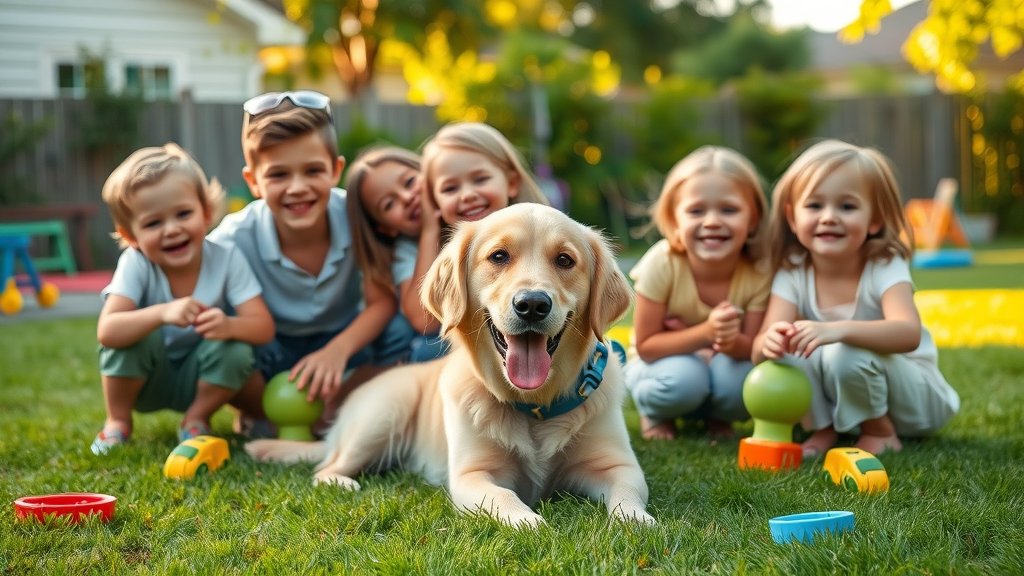
Searching for the Perfect Dogs for Families? What Makes the Ideal Family Dog?
- Have you ever wondered which dog breed truly thrives as a family pet? Discover how choosing the right family dog can transform your household into a loving, joyful space.
Selecting the ideal family dog goes far beyond picking a cute puppy from a litter. The best dogs for families share unique qualities: they are patient, gentle, and adaptable, making them excellent partners for both children and adults. When choosing between different dog breeds for families , you’ll want to focus on temperament, trainability, and compatibility with your family’s lifestyle. For instance, a golden retriever or labrador retriever makes a great family companion due to their loving and even-tempered nature, while a playful beagle or adaptable bichon frise can brighten up smaller homes. Practical examples include families with toddlers who may prefer low-key breeds such as the bulldog , whereas active households might gravitate toward larger, more energetic dogs like the boxer or collie . By evaluating the qualities that matter most, you ensure your family pet becomes a cherished and safe member of your household.
Key Takeaways for Choosing Dogs for Families
- • Learn what traits define the best dogs for families
- • Uncover the easiest dog breeds to train and socialize
- • Find out which family dog breeds suit homes of all sizes
- • Explore must-know tips for dog owners to build lasting bonds
What Makes Dogs for Families a Good Fit? Analyzing Family-Friendly Dog Breeds
Understanding Family Dog Temperament and Energy Level
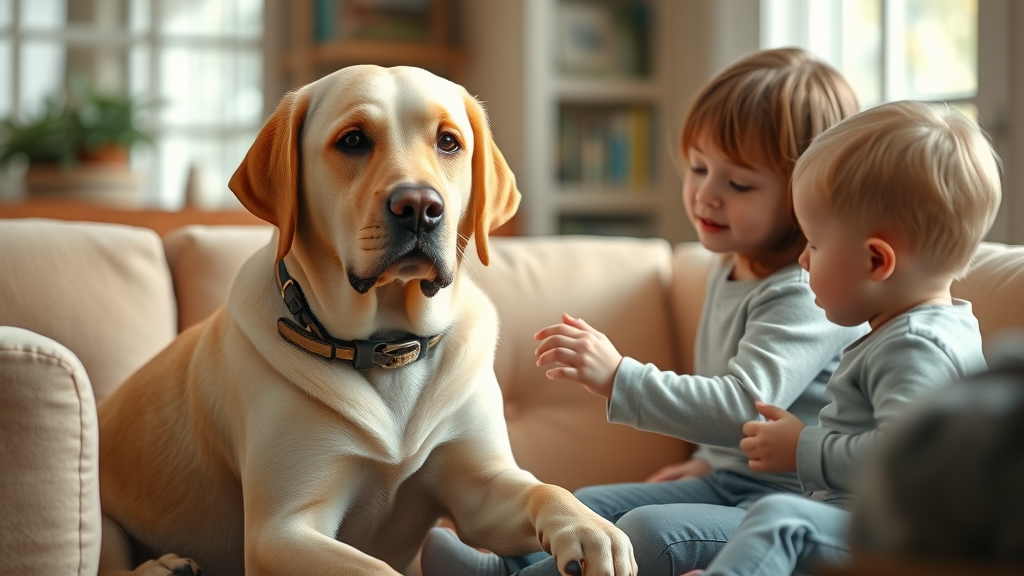
The cornerstone of a perfect family dog lies in their temperament and energy level . Dogs that are gentle and patient with small children , such as the golden retriever and collie , integrate smoothly into family life . On the other hand, highly energetic breeds like the boxer or irish setter thrive in active households where play and exercise are part of the daily routine.
It’s crucial to match the dog’s energy level with your family’s activity style. Low-key households benefit from calm breeds like the bulldog , while families who love outdoor adventures might opt for more spirited options. A balanced temperament ensures the dog is good with children , doesn’t startle easily, and interacts safely with all family members. Ultimately, a family dog who is tolerant, willing to learn, and eager to please will thrive as an excellent family companion.
Easy to Train Dog Breeds for New Dog Owners
If you’re a first-time dog owner , selecting an easy to train breed makes the transition to being a pet parent much smoother. Labrador retrievers , poodles , and shetland sheepdogs are renowned for their intelligence and willingness to learn commands quickly. These dog breeds not only pick up basic obedience but also thrive on mental stimulation —key for harmonious family life .
Breeds that are easy to train are less likely to develop problem behaviors, making them great for families with children who may sometimes inadvertently challenge a dog’s patience. Investing in a breed that is quick to adapt ensures your new family pet builds strong bonds through consistent routines, socialization, and engaging activities. With the right training, dogs such as the bichon frise and labrador retriever make excellent family members even for novice dog owners.
Size Matters: Choosing the Right Sized Dog for Your Family
The size of your family dog can greatly affect their suitability for your home. Large breeds like the newfoundland offer gentle companionship but require spacious yards and are best for families with ample room. Alternatively, a small dog such as a maltese or shih tzu is an ideal solution for those living in apartments or urban settings.
Consider how much space you have and how comfortable you are managing a particular sized dog . Medium-sized dogs such as the beagle or cavalier king charles spaniel balance manageability with durability for play with children. Ultimately, the right size means better harmony, less risk of accidents, and a more enjoyable life for both the family pets and your loved ones.
Allergy-Friendly or Hypoallergenic: Bichon Frise and Other Low-Shedding Family Dogs
Dealing with allergies shouldn’t prevent anyone from experiencing the joys of family dogs . Bichon frise , poodle , and certain mixed breeds are celebrated for their hypoallergenic qualities and low-shedding coats. These dog breeds shed less dander and are often recommended for families where allergies are a concern.
Many dog breeds for families today are being selectively bred for low-shedding characteristics, developing into the perfect match for pet parents with sensitivities. Choosing an allergy-friendly breed means everyone can enjoy the company of a beloved family pet without the hassle of constant sneezing or excessive cleaning.
Top 15 Dogs for Families: The Ultimate List of Dog Breeds
- Golden Retriever: The Quintessential Family Dog
- Labrador Retriever: Loyal, Trainable, and Playful
- Beagle: Curious, Gentle, and Adaptable
- Bichon Frise: Hypoallergenic and Affectionate
- Cavalier King Charles Spaniel: Outgoing and Patient
- Bulldog: Calm and Devoted Family Companion
- Boxer: Energetic, Fun-loving, and Protective
- Poodle: Smart, Hypoallergenic, and Versatile
- Collie: Intelligent, Loyal, and Kid-Friendly
- Shetland Sheepdog: Gentle and Highly Trainable
- Newfoundland: Gentle Giant and Water-Loving Friend
- Irish Setter: Enthusiastic and Friendly
- Vizsla: Athletic, Loving, and Gentle
- Mutts & Mixed Breeds: Unique, Adaptable, and Often Family-Oriented
- Small Dog Options: Maltese, Shih Tzu, Miniature Schnauzer for Smaller Living Spaces
Comparison Table of Popular Dogs for Families – Size, Temperament, Trainability, and Energy Level
| Dog Breed | Size | Temperament | Trainability | Energy Level |
|---|---|---|---|---|
| Golden Retriever | Large | Loving, Friendly, Patient | Very High | High |
| Labrador Retriever | Large | Gentle, Eager to Please | Very High | High |
| Beagle | Medium | Curious, Gentle | Medium | Medium-High |
| Bichon Frise | Small | Playful, Affectionate | High | Medium |
| Boxer | Medium-Large | Energetic, Protective | Medium | High |
| Bulldog | Medium | Calm, Devoted | Low-Medium | Low |
| Maltese | Small | Sociable, Gentle | Medium | Medium |
Golden Retriever: The Family Dog Everyone Loves
Golden Retriever Personality and Family Suitability
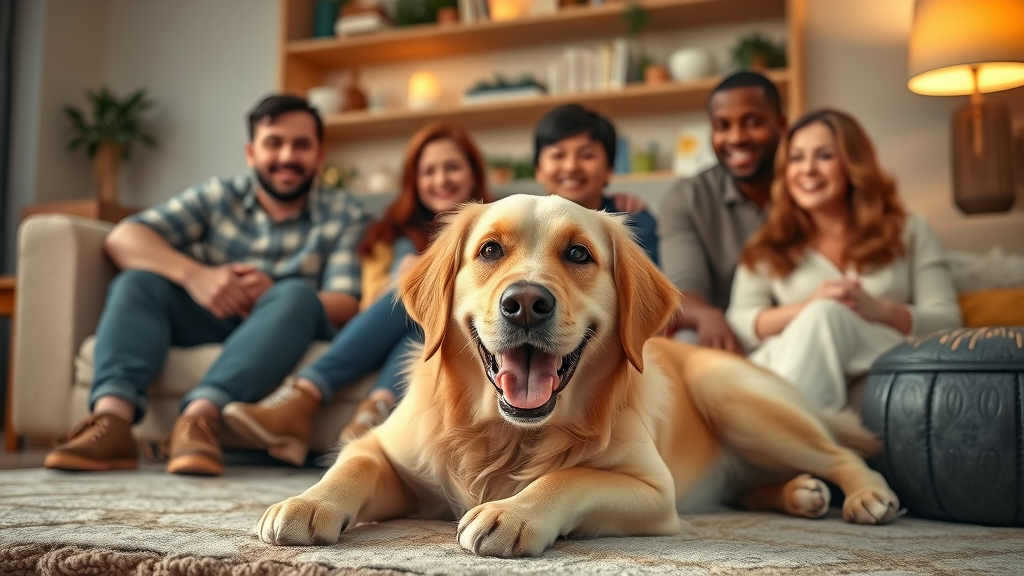
When families think of an excellent family dog , the golden retriever stands at the top of the list. Known for their loving nature , intelligence, and unwavering loyalty, golden retrievers are remarkable with children of all ages. Their adaptability makes them ideal for both active and more laid-back households.
With patience and a gentle demeanor, golden retrievers establish themselves as trustworthy family members . Their playful energy aligns beautifully with kids, and their affectionate side shines through quiet evenings at home. As a dog breed for families , golden retrievers bring both joy and a sense of safety to any home.
Energy Level and Daily Exercise Needs
The typical golden retriever possesses a high energy level , thriving on regular walks, playtime, and interaction. Without consistent daily exercise , these family dogs risk becoming bored or developing behavior issues. Their intelligence and enthusiasm make activities like fetch, swimming, and agility games highly rewarding.
A golden retriever is best for active households who can provide the mental stimulation and physical outlets needed for a happy life. Structured routines not only keep them healthy but further cement the strong bond between the pet parent and their loyal companion.
"The golden retriever is well-known for its loving nature and unwavering loyalty, making it the classic family dog."
Golden Retriever as a Family Pet: Real-Life Owner Stories
Many real-life pet parents share heartwarming accounts of bonds with their golden retrievers. Whether the dog’s gentle presence helped a shy child gain confidence or their playful antics brought laughter to family gatherings, the golden retriever’s legacy as an excellent family pet continues to grow. Their eagerness to please and sensitive nature make them adaptable to changing family dynamics, proving their worth as cherished family pets .
Beyond their puppy stage, golden retrievers remain loyal and even-tempered, building enduring relationships that last a lifetime. Owners often cite their patience, ability to understand emotions, and unwavering devotion as reasons why they would never choose another breed for a family setting.
Labrador Retriever: One of the Most Popular Family Dog Breeds
Labrador Retriever Temperament with Children
The labrador retriever has earned a reputation as one of the most popular dog breeds for families worldwide. Labradors are naturally social, eager to make new friends, and especially good with children . Their soft mouths, paired with a playful outlook, make them safe and entertaining companions during rough-and-tumble games in the yard.
Labs are exceedingly tolerant, rarely displaying signs of aggression or impatience. Their love for attention and willingness to be part of every family event means they quickly become an adored family member . Labradors are also excellent for households with children on the autism spectrum, as their reliable behavior helps reduce anxiety and offers emotional support.
Trainability and Adaptation in Family Homes
Labrador retrievers are renowned for their trainability . Their intelligence and desire to please make training sessions fun and effective. When introduced to routines early and provided with proper mental stimulation , labs excel in obedience, agility, and even service dog work.
Their adaptability extends from bustling homes with lots of visitors to quieter households. Labradors can thrive with a structured environment, consistent exercise, and lots of affection. This versatility, combined with their friendly demeanor, helps secure their place as one of the best family dogs around.
Small Dogs for Families: Best Small Dog Breeds for Cozy Spaces
Top Small Dog Breeds: Bichon Frise, Maltese, and Shih Tzu

Families living in apartments or smaller spaces often seek a small dog breed that is still friendly, loving, and manageable. The bichon frise , maltese , and shih tzu stand out for their cheerful attitudes, hypoallergenic fur, and gentle natures—making them perfect choices for kids and adults alike.
These breeds may be small in stature but make up for it with huge personalities. Their adaptability to both active and quiet households allows every pet parent to find joy in their compact companionship. Importantly, these dog breeds tend to shed less, which is a boon for allergy-sensitive families.
Benefits of Small Sized Dogs for Urban and Apartment Living
Adopting a small dog in an urban environment comes with many advantages. These breeds need less space, making city apartments or condos an ideal habitat. They also tend to require less exercise compared to larger breeds, but still offer energetic play for kids indoors.
Small dogs often enjoy being close to their humans, which strengthens the human-pet bond. With the right training and early socialization, breeds like the bichon frise demonstrate that big hearts can come in small packages, proving their reputation as excellent family companions—even in the most compact of homes.
Medium and Large Dogs for Families: Spacious Homes and Yards
Collie and Boxer: Best Medium-Sized Dogs for Children
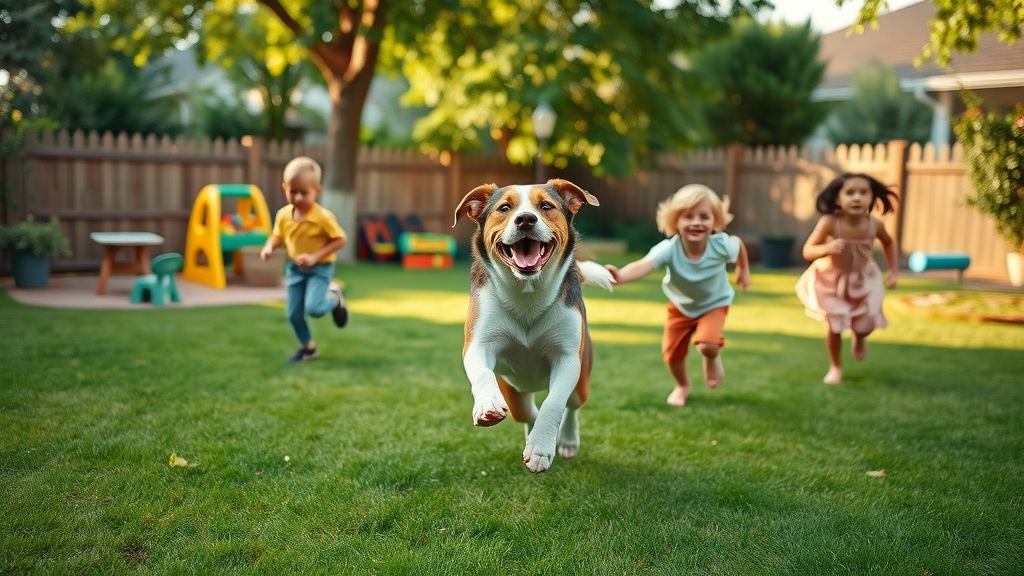
Families with more space to roam might consider medium and large breeds like the collie and boxer . These dog breeds are beloved for their intelligence, loyalty, and playfulness, making them great companions for kids who love to be outdoors.
The collie , known from Lassie fame, is incredibly gentle and easy to train , often forming strong protective bonds with children. Boxers are the clowns of the dog world—energetic, alert, and naturally protective, making them fun playmates and vigilant watchdogs. Both breeds adapt well to active lifestyles and bring boundless energy to every family gathering.
Newfoundland and Irish Setter: Large Dog Breeds with Gentle Temperaments
If you have ample yard space and want a gentle giant , consider the newfoundland or irish setter . Newfoundlands are famous for their patient, nurturing nature; they are natural lifeguards and exceptional with small children due to their watchful, steady demeanor.
The irish setter brings infectious enthusiasm and warmth, fitting well with families who thrive on outdoor fun. Both breeds do best in active, engaged households where regular walks and playtime are part of the daily routine. Their calmness and devotion make them quintessential family pets .
Training and Socializing Family Dogs for Success
Tips for Easy to Train Family Dogs

Training plays a pivotal role in transforming dogs for families into well-behaved companions. Start with positive reinforcement—rewarding good behavior with treats or affection—especially for easy to train breeds like poodles , labrador retrievers , and shetland sheepdogs . Keep lessons short, consistent, and fun to sustain your family pet’s interest and confidence.
Practice daily commands such as sit, stay, and come, and set boundaries with patience. A strong training foundation strengthens the bond between pet parent and dog, encourages quick adaptation to family routines, and ensures harmony at home for years to come.
Creating a Routine for Obedience and House Manners
A predictable routine helps family dogs understand expectations and reduces anxiety. Meal times, walks, play sessions, and downtime should be consistent each day. Incorporate short lessons in socialization such as visiting parks, meeting neighbors, or introducing the dog to new environments and sounds.
Consistent routine-building not only teaches obedience but also develops your dog breed’s trust and affection. This leads to better house manners, less destructive behavior, and a smooth integration into the family’s natural rhythm.
The Importance of Early Socialization for Family Pets
Early exposure to new people, pets, and experiences is essential for any family dog . Socializing puppies within the first six months helps prevent fear, aggression, and nervousness. Well-socialized dogs for families are confident, adaptable, and less likely to be startled by everyday chaos.
Take your dog for walks in different settings, invite friends with children over, or enroll in puppy kindergarten classes. The result is a pet comfortable in the world and a joy for everyone in your household.
Energy Levels: Matching Dogs for Families with Your Lifestyle
Low, Medium, and High Energy Family Dogs – What You Need to Know

Every dog breed displays a unique energy level , crucial when aligning a pet with your family’s daily patterns. Low energy dogs like bulldogs need only minimal exercise and relish lazy afternoons, while medium energy breeds like beagles and cavalier king charles spaniels benefit from regular walks and interactive play.
High energy breeds—including golden retrievers , boxers , and irish setters —crave adventure and ongoing mental stimulation . They do best in households ready for outdoor play and daily outings. Evaluating energy needs accurately will help you avoid mismatches that lead to frustration for both pet and owner.
Choosing a Family Dog Breed That Matches Your Activity Level
Ask yourself how much time and commitment you can consistently offer your pet. If you spend weekends hiking or running, a high-energy dog breed may be perfect. For city dwellers with limited space or demanding work schedules, stick with lower energy dogs that require less time but still offer loyal companionship.
Allergies and Low-Shedding Options: Hypoallergenic Family Dog Breeds
Bichon Frise, Poodle, and Other Allergy-Friendly Dogs
For families with allergies, breeds like the bichon frise , poodle , and miniature schnauzer are a game-changer. Their curly or silky coats trap shed hairs and dander, making them some of the most allergy-friendly dogs available. Not only do these breeds make great family pets, but they also reduce the common triggers for sneezing or itchy skin.
Other low-shedding breeds such as the maltese or havanese also fit the bill for families who want the companionship of a pet without the hassle of excessive shedding. These breeds combine gentle qualities with practical ease, enhancing life for allergy-prone children and adults.
Tips for Managing Pet Allergies with Family Dogs
Even with hypoallergenic dogs, regular cleaning and grooming can keep allergies to a minimum. Bathe your dog frequently, vacuum the house, and use HEPA air filters to reduce allergens in your home. Creating a pet-free zone in bedrooms offers respite for particularly sensitive family members.
Addressing allergies through proactive habits ensures every member of the household enjoys the love and connection that a family dog provides—without fear of discomfort or health issues.
Safety at Home: Choosing the Safest Dog Breed for Children
Temperamental Qualities in the Safest Dogs for Families
Safety should always be at the forefront when adding a new dog breed to your family. Select family dogs with reliable, even temperaments—those who rarely startle and are tolerant of children. Breeds like the collie , beagle , and newfoundland are known for their sturdy patience and strong instincts to protect.
Dogs that naturally avoid nipping, herding, or resource guarding behaviors are preferred, especially when there are small children at home. These qualities make for peaceful, joyful interactions and a stress-free environment for everyone.
How to Introduce a New Family Dog Safely
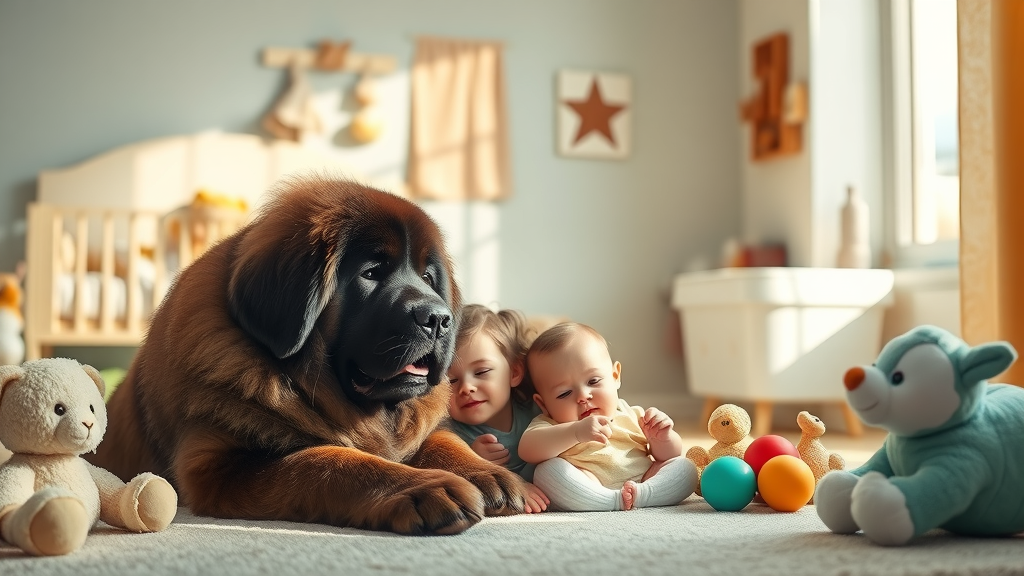
Introduce your new family pet gradually and with supervision. Allow your dog to explore their new environment at their own pace before greeting each family member. Use positive reinforcement and treats to encourage calm, gentle behavior.
Monitor early interactions between the dog and young children, setting clear boundaries for both. The process should be slow and reassuring, avoiding situations that could overwhelm or frighten your new family dog . With time and care, your dog will feel secure and confident as part of the household.
Dogs for Families: Best Practices for Dog Owners
Building Long-lasting Bonds with Your Family Pet
Bonding with your family dog is a lifelong adventure. Spend time engaging in shared activities—walks, games, or learning new tricks—to build trust and deepen understanding. Celebrate milestones, from successful training sessions to quiet cuddle moments, reinforcing your dog’s place as a cherished family member .
Respect your dog’s needs by listening to their cues, offering consistent affection, and treating them with patience. This mutual respect lays the groundwork for a joyful, harmonious relationship.
Ensuring Your Family Dog’s Health, Safety, and Happiness
A happy, healthy family pet is the product of love, attentive care, and vigilance. Feed your dog a balanced diet, keep up with regular veterinary checkups, and prioritize mental and physical activity. Secure your home and yard to prevent accidents, and keep toxic foods or chemicals out of reach.
Quality of life is everything—meeting your family dog’s needs means many years of loyalty and unforgettable memories for the whole family. By investing in your pet’s well-being, you ensure your home remains filled with love and warmth.
Frequently Asked Questions about Dogs for Families
What is the most family friendly dog?
The golden retriever , labrador retriever , and poodle are consistently ranked as the most family friendly dog breeds due to their loyal and gentle nature, patience, and ability to adapt well to children.
What is the safest dog breed?
The collie , beagle , and newfoundland are known as some of the safest dog breeds for families . Their even temperaments and affable personalities make them excellent choices for families with young kids.
What dog can be left alone for 8 hours?
Breeds like basset hound, greyhound, and French bulldog are more independent and can often tolerate being alone for longer periods compared to more social or high-energy breeds. However, all dogs need companionship and mental stimulation .
What is the best dog for a home with kids?
The labrador retriever and golden retriever are widely considered the best dogs for a home with kids, thanks to their gentle disposition, patient attitude, and eagerness to please.
Key Factors for Long-Term Family Dog Happiness
- Regular exercise and engagement
- Strong, positive training techniques
- Appropriate grooming and health checks
- Consistency in routine and affection
Making the Final Decision: Which Dogs for Families Suit Your Household Best?
"The right dog breed becomes more than a pet—they become your family’s loyal friend and cherished companion."

Making your final decision means weighing all the factors—size, temperament, energy needs, and household activity level—against your unique family circumstances. Speak with breeders or rescue organizations, meet several breeds in person, and always involve other family members in the choice. The right family dog will effortlessly become an integral part of your daily rhythm.
Remember that there’s no single best or worst dog breed for families—only the best match for your lifestyle, values, and dreams. Take your time, trust your instincts, and prepare to enjoy years of love, loyalty, and unforgettable adventures.
Ready to Welcome the Perfect Family Dog? Start Your Journey to Finding the Ideal Dogs for Families Today
Are you ready to take the first step toward a fuller, more connected family life? By exploring the best dogs for families , you open your heart to a relationship filled with joy and unconditional love. Start your journey with confidence—and welcome the perfect new family member home.
Summary: Why Dogs for Families Remain Unmatched as Family Pets
In every corner of the world, dogs enrich homes with laughter, love, and resilience. By choosing the right family dog , investing in training and care, and prioritizing health and happiness, any household can experience the unmatched joy that only a loyal family pet can bring.
When selecting the perfect family dog, it’s essential to consider breeds known for their friendly temperaments, adaptability, and compatibility with children. The American Kennel Club highlights several breeds that excel in family settings:
-
Labrador Retriever : Celebrated for their affectionate and patient nature, Labradors are highly trainable and thrive in active households. ( akc.org )
-
Golden Retriever : Known for their intelligence and agreeable personality, Golden Retrievers are versatile companions who enjoy engaging in various family activities. ( akc.org )
-
Beagle : With their curious and energetic disposition, Beagles are excellent with children and adapt well to family life. ( akc.org )
-
Bulldog : These loyal and calm dogs are known for their gentle nature, making them suitable companions for families with younger children. ( akc.org )
-
Poodle : Available in standard and miniature sizes, Poodles are highly intelligent and hypoallergenic, making them a great choice for families with allergies. ( akc.org )
For a comprehensive overview of family-friendly dog breeds, the American Kennel Club’s article, “ Best Family Dogs: Which Breed Is Right for You? ,” provides detailed insights into each breed’s characteristics and suitability for family life.
Additionally, Purina’s guide, “ The Best Dog Breeds for Families & Children ,” offers valuable information on selecting the right dog to match your family’s lifestyle and needs.
Exploring these resources will help you make an informed decision in choosing a dog that will become a cherished member of your family.
 Add Row
Add Row  Add
Add 




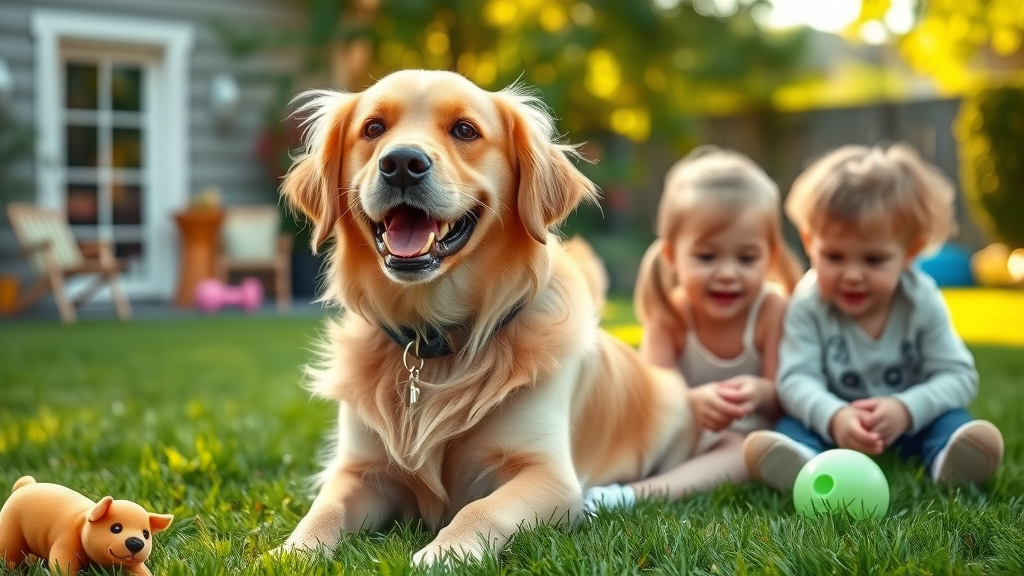
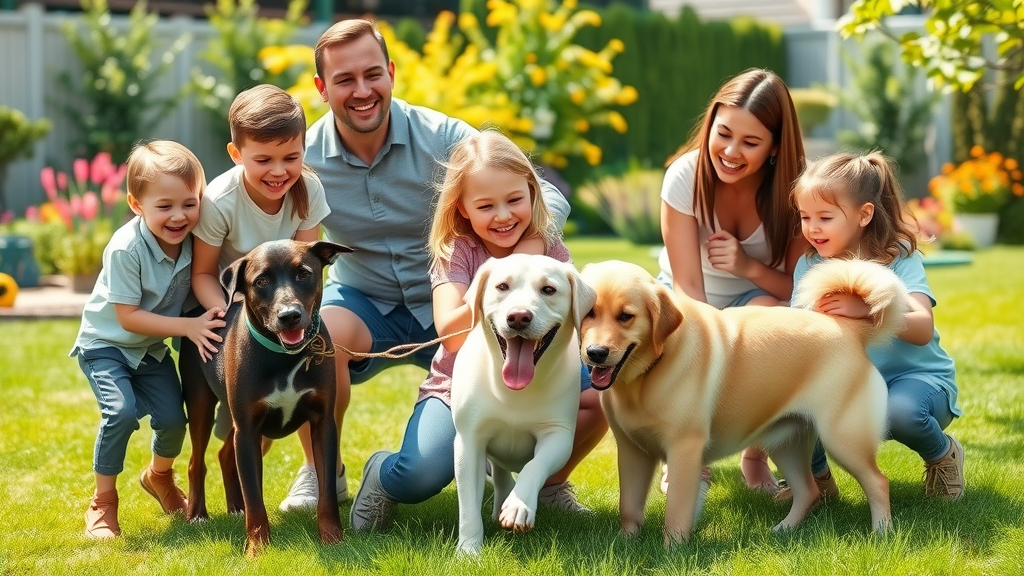


Write A Comment